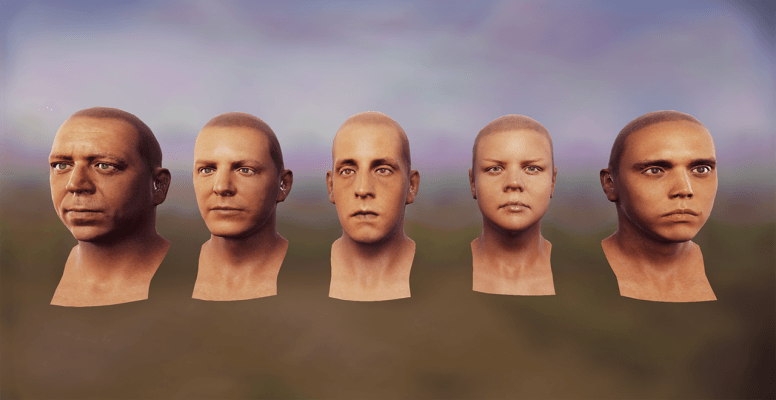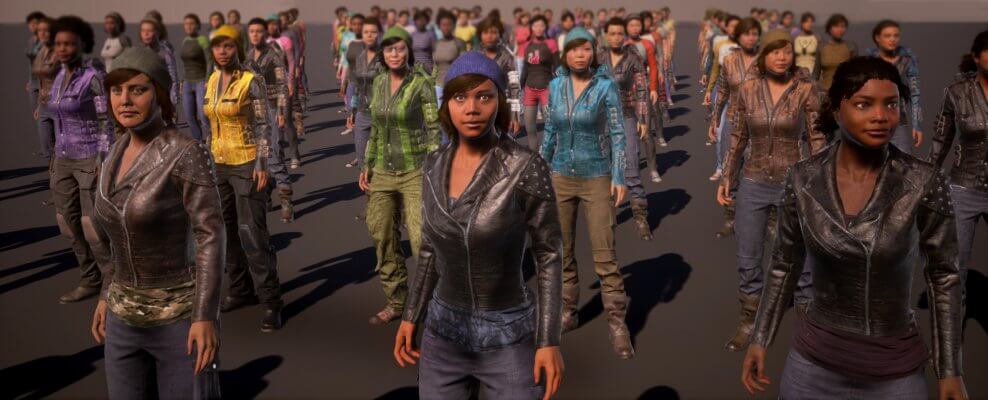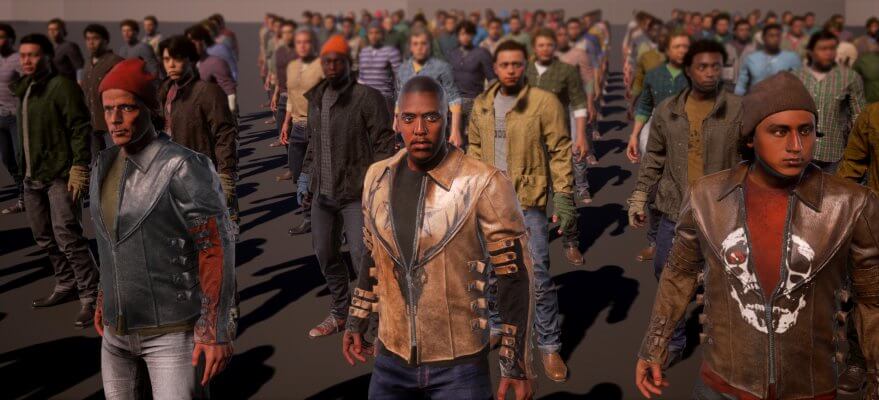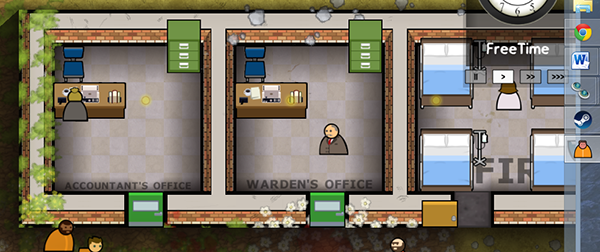I spent a lot of time looking at diversity in State of Decay and its re-release, from actually counting and coding bodies to considering the feeling of a game driven by the kinds of characters who don’t normally lead stories. Results were mixed; the game, while much stronger than many other titles in terms of diverse (story) characters, had some flaws. But flaws aren’t surprising—in gaming, they’re more often just the norm. Not even flaws. Which means that, in the end, it’s the standout characters in State of Decay that really shine… older women, larger-bodied folks, Black men filling hero roles. And we have it on good authority that with the sequel, Undead Labs is looking to improve upon the earlier model, with an even stronger array of real-world inspired character models.
Last fall, there was a lot of talk about using fans and friends as guinea pigs for State of Decay 2. Undead Labs held a contest, asking entrants to submit pictures if they were able to be in the Seattle area to be scanned in as a potential survivor (or zombie) in the game, and last week, with the debut of a four-part series on the humans in this brave new world, we got a look at the results.

So I’m scrolling through this update, bated breath, the works, and I get to these heads. Awesome, I’m thinking. There’s a ton of difference in face shape, in features… you get a real sense of individuality. But they’re all the same color. Like literally the same shade. So a glimmer of doubt starts….


Well, of course the heads above are all the same; they’re just silly basic heads! But here, there are bodies—no, humans, with different noses and jawlines and skin tones and hair. Distinctly different features. I was re-reading a book by Lisa Nakamura recently in which she referenced the website AllLookSame.com. The centerpiece of the site is a quiz that asks visitors to identify if people are Japanese, Chinese, or Korean. Surprise—most people can’t tell, with any real accuracy, but once you take the quiz and look back, you can start to see the things you missed. The physical characteristics that set people from different places apart. And sometimes it’s still mystifying, because there’s overlap and similarity. People are complex. They’re difficult to code. Even if, as the website boasts, these folks are all “100%,” what’s that really mean? What other influences lurk in their genes? There’s no “Asian” set of features, or “African.” There are spectrums, influences, bits and pieces that come together in a puzzle of humanity.
People are messy.
The people in State of Decay 2 look messy. They look like people.
This isn’t to say these images can’t be critiqued; sure they can. Why, for instance, pose everyone up front with similar clothes, when it’s clear there’s a lot of difference in the back? Show it off. The models we see here, too, all have the same body type (and they really like that one jacket; it is the official jacket of kicking zombie ass). It saves money, sure, but cuts down on the realism a little. Some people just have bigger butts, narrower shoulders, giant boat feet, tiny hands. A little of that diversity would be great. But for me, at least, it’s not a dealbreaker. I have faith we’ll see some of it in the story, if the first game is any measure, and streamlining costs is a reality that has to be balanced. We should discuss it, though. In this Westworld-esque pantheon of survivors waiting to be activated, it’d be nice to see someone who’s short, or tall, or thick-thighed. And maybe there is; maybe they’re just not in this picture. We’ll have to wait and see.
But for now, this beautiful, messy array of humans gives me hope that a good game may be even stronger. After all, it wasn’t necessarily the mechanics that drove State of Decay, or the story, or the world. It was the feeling of something at stake, of people at stake. And everything that makes those people feel more real? Well, that only raises the stakes.
State of Decay 2 is set to release sometime this year.




